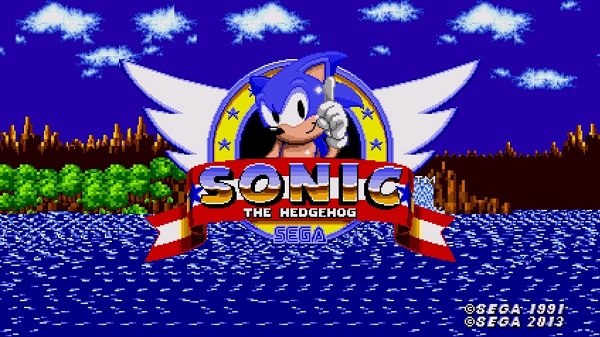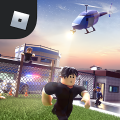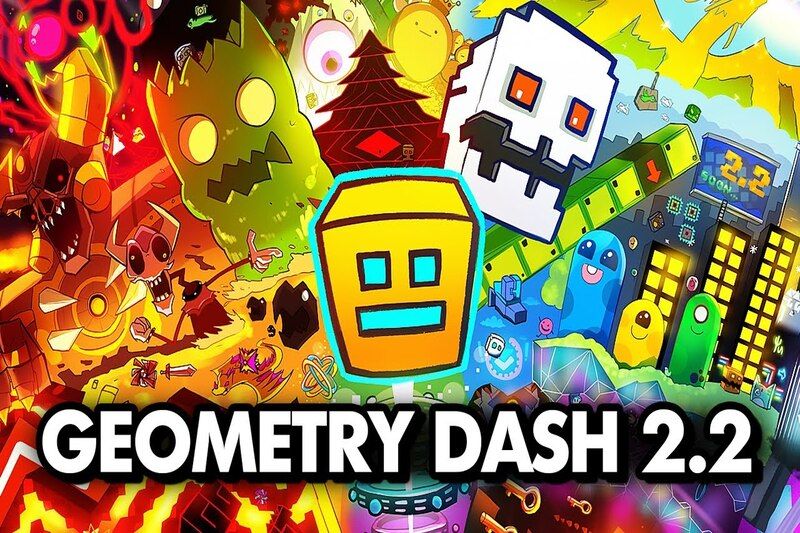Advertisement
Popular Now
Sonic the Hedgehog™ Classic, released in 1991 by SEGA for the Genesis/Mega Drive, redefined platforming with its lightning-fast protagonist and vibrant world. The game’s emphasis on speed, fluid controls, and memorable zones like Green Hill made it a cultural icon. However, beneath its polished exterior lies a critical issue: the tension between its high-speed design philosophy and the level design’s demand for precision and caution. This article explores how the level design in Sonic the Hedgehog™ Classic creates a challenging dichotomy, forcing players to balance speed with careful navigation, and examines its evolution, impact, and legacy over time. Through a chronological and thematic analysis, we uncover how this tension shaped the game’s identity, frustrated and thrilled players, and influenced the franchise’s trajectory.
The conflict between speed and precision manifests in level layouts that reward momentum but punish recklessness with obstacles, traps, and sudden hazards. This design choice creates exhilarating highs but also frustrating lows, particularly for new players. By dissecting key moments in the game’s development, reception, and legacy, we reveal how SEGA navigated this issue and what it means for Sonic’s enduring appeal.



Genesis of Speed: The Design Philosophy (1990-1991)
Speed as a Selling Point
When SEGA developed Sonic the Hedgehog, the goal was to differentiate it from Nintendo’s Super Mario Bros. by emphasizing speed. Yuji Naka and the Sonic Team crafted a game where momentum was king, with loops, ramps, and slopes encouraging players to blaze through levels. However, this focus on speed clashed with the need for precise platforming, as levels were filled with spikes, enemies, and narrow platforms that demanded careful movement.Early Level Design Challenges
Green Hill Zone, the game’s opening act, introduces this tension immediately. Its open layouts invite players to sprint, but hidden spikes and moving platforms punish blind speed. The game’s physics, while innovative, require players to master momentum, as stopping or adjusting mid-run is difficult. This created a learning curve that felt thrilling to some but unforgiving to others, as noted in early developer interviews from 1991.Key Design Elements
- Momentum-Based Physics: Sonic’s acceleration encourages continuous movement.
- Hidden Hazards: Spikes and enemies often appear suddenly, disrupting flow.
- Learning Curve: Players must adapt to balancing speed with caution early on.
Launch and Reception: Player Reactions (1991)

A Mixed Response
Upon release, Sonic the Hedgehog was a critical and commercial success, praised for its visuals and fast-paced gameplay. However, reviews from outlets like Mean Machines highlighted the level design’s punishing nature. Zones like Marble Zone, with its slow, trap-heavy layout, contrasted sharply with Green Hill’s flow, frustrating players expecting constant speed.The Precision Problem
Marble Zone’s narrow platforms and falling blocks required meticulous timing, clashing with Sonic’s high-speed mechanics. Players who mastered Green Hill’s flow found themselves slowing to a crawl, as the game’s controls, optimized for speed, felt clunky in tight spaces. This disconnect revealed a core flaw: the level design didn’t always align with the game’s marketed identity.Player Pain Points
- Inconsistent Pacing: Zones alternated between fast and slow, disrupting rhythm.
- Control Sensitivity: Sonic’s slippery controls made precision platforming tricky.
- Trap Placement: Sudden obstacles punished players for following the game’s speed cues.
Marble Zone: The Poster Child for Design Conflict (1991)
A Shift in Tone
Marble Zone, the second act, epitomizes the speed-precision tension. Its lava-filled corridors, moving platforms, and crush traps force players to stop and strategize, contradicting Sonic’s “gotta go fast” mantra. While visually striking, the zone’s design feels at odds with the game’s core mechanic, creating a jarring shift from Green Hill’s freedom.Impact on Player Experience
For many, Marble Zone was a roadblock. The slow pacing and frequent deaths from mistimed jumps or unseen spikes led to frustration, as documented in fan forums from the early 2000s. The zone’s reliance on precise inputs highlighted the limitations of Sonic’s controls, which were less responsive at low speeds, making it a divisive part of the game.Specific Challenges
- Crush Traps: Platforms that crush Sonic if mistimed require slow, deliberate movement.
- Lava Hazards: Falling into lava pits punishes players for rushing.
- Limited Momentum: Tight spaces restrict Sonic’s ability to build speed.
Labyrinth Zone: Escalating Frustration (1991)
Water as a Speed Killer
Labyrinth Zone, the fourth act, amplifies the design issue with its underwater segments. Water slows Sonic’s movement, and the rising bubble mechanic introduces a time pressure that clashes with the need for careful navigation. The zone’s complex layouts, filled with spikes and enemies, demand precision in a game built for speed.The Bubble Mechanic
The oxygen bubble system, where Sonic must grab air to avoid drowning, adds urgency but also frustration. Players must pause to wait for bubbles, breaking the game’s flow. As noted in a 1991 GamePro review, this mechanic felt like an artificial barrier, punishing players for trying to maintain momentum in a zone that discouraged it.Technical Constraints: Hardware’s Role (1991)
Genesis Limitations
The SEGA Genesis’s hardware influenced the level design challenges. Limited processing power meant levels couldn’t be overly complex, leading to compact, hazard-filled layouts. The game’s sprite-based collision detection also made precise platforming harder, as Sonic’s hitbox didn’t always align perfectly with narrow platforms.Control Design Trade-offs
Sonic’s controls were optimized for speed, with a focus on smooth acceleration and momentum. However, this made fine-tuned movements difficult, especially in zones like Star Light or Scrap Brain. The lack of a dedicated “stop” button meant players often overshot platforms, exacerbating the precision issue.Technical Hurdles
- Sprite Collision: Inconsistent hitboxes led to unexpected deaths.
- Frame Rate: Occasional slowdown in busy areas disrupted timing.
- Input Lag: Minor delays in control response affected precision jumps.
Community Feedback: The Fan Response (1991-1995)

Early Fan Discussions
As Sonic the Hedgehog gained a cult following, fans voiced concerns about level design on early internet forums and in letters to magazines like Electronic Gaming Monthly. Many praised the game’s innovation but criticized zones like Labyrinth and Marble for feeling unfair. Speedrunners, emerging in the mid-1990s, developed techniques to bypass traps, but casual players struggled.Adaptation Strategies
Players developed workarounds, such as memorizing trap locations or exploiting invincibility power-ups to maintain speed. These strategies, while effective, required significant practice, highlighting the steep learning curve imposed by the level design’s demands for precision.Community Workarounds
- Route Memorization: Learning enemy and trap patterns to minimize deaths.
- Spin Dash Exploitation: Using the spin dash (added in Sonic 2) in later ports to bypass obstacles.
- Power-Up Hunting: Collecting rings and invincibility to mitigate hazards.
SEGA’s Response: Sequels and Adjustments (1992-1994)
Learning from Feedback
Sonic the Hedgehog 2 (1992) addressed some criticisms by streamlining level design. Zones like Chemical Plant allowed for smoother, faster routes while reducing sudden traps. However, slower areas like Mystic Cave still drew ire for precision-heavy platforming, showing SEGA’s struggle to fully resolve the issue.Refining the Formula
By Sonic 3 & Knuckles (1994), SEGA introduced more forgiving mechanics, like the insta-shield, which gave players a brief window of invincibility. Levels were designed with multiple paths, allowing speed-focused players to bypass precision-heavy sections. These changes showed SEGA’s attempt to balance the game’s core tension.Key Improvements
- Multiple Paths: Levels offered fast and slow routes, catering to different playstyles.
- New Mechanics: The insta-shield and elemental shields aided navigation.
- Reduced Traps: Fewer sudden hazards allowed for smoother momentum.
The Legacy: Speed vs. Precision in Retrospect (2000s)

Critical Reevaluation
In the 2000s, retrospectives from outlets like IGN and Eurogamer praised Sonic the Hedgehog for its bold design but noted its level design flaws. The tension between speed and precision became a defining trait, distinguishing Sonic from Mario’s more forgiving platforming. This dichotomy became a hallmark of the franchise’s identity.Impact on Modern Sonic
Modern titles like Sonic Generations (2011) revisit classic zones with updated designs that minimize precision demands. Green Hill’s reimagining, for example, prioritizes flow over traps, reflecting lessons learned from the original’s challenges. However, some fans argue this dilutes the original’s unique challenge.Cultural Impact: A Design Philosophy’s Influence (1991-Present)
Shaping Platformers
Sonic the Hedgehog’s level design influenced games like Rayman and Crash Bandicoot, which blended speed with precision but avoided Sonic’s extremes. The game’s legacy lies in proving that speed could be a core mechanic, even if it came with trade-offs that frustrated players.The Meme of “Gotta Go Fast”
The phrase “gotta go fast” became a cultural touchstone, but it also highlighted the irony of Sonic’s design. Memes and fan content often poke fun at the game’s punishing traps, reflecting how the speed-precision tension remains a defining memory for players.Cultural Touchstones
- Speedrunning Community: Sonic’s design inspired a dedicated speedrunning scene.
- Fan Remakes: Projects like Sonic Fan Remix reimagine levels with smoother flow.
- Nostalgia Factor: The game’s challenges fuel its enduring appeal.
The Future: Balancing Speed and Precision (2025 and Beyond)
Modern Design Solutions
As Sonic continues to evolve, future titles could address the speed-precision issue with dynamic difficulty or adaptive level design. For example, levels could adjust trap placement based on player performance, ensuring accessibility without sacrificing challenge. Sonic Frontiers (2022) hints at this with its open-world approach, prioritizing freedom over rigid platforming.Lessons for Game Design
Sonic the Hedgehog teaches that core mechanics must align with level design to avoid player frustration. Future platformers can learn from Sonic’s missteps by ensuring that speed-focused gameplay isn’t undermined by overly punitive obstacles, creating a more cohesive experience.Potential Improvements
- Adaptive Hazards: Levels that adjust difficulty based on player skill.
- Control Refinements: Smoother transitions between high and low speeds.
- Clear Feedback: Visual cues to warn of upcoming traps without breaking flow.

















